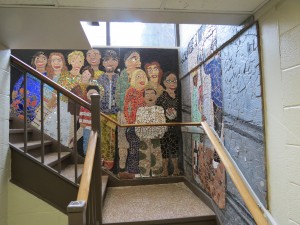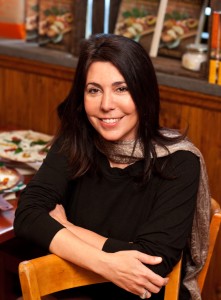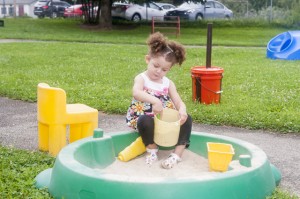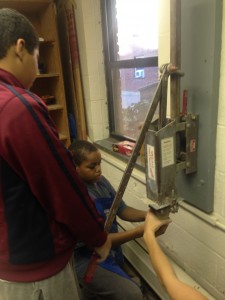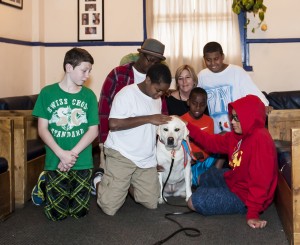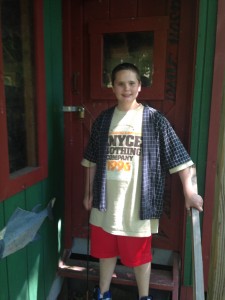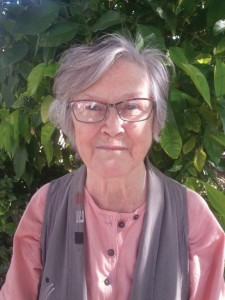I first encountered Ignacio Martín-Baró’s liberation psychology when I volunteered for the Salvadoran Archdiocese Health Project in 1987. At the time, physicians working with the poor in El Salvador were persecuted. Aesculapius International Medicine, a small non-profit organization, responded to the Salvadoran Archdiocese’s request for health professionals who would be less likely targets of dollar-backed bullets. We would travel to towns in conflict zones to teach volunteers to diagnose and treat the most common diseases. Poor survivors in remote areas became health promoters for their neighbors. Seeds of liberation were sown.
Martín-Baró’s work continues to sustain me in my work as a community psychiatrist in the Bronx, New York. Since he wrote in Spanish, his work before he died was barely known beyond Latin America. After he, his five Jesuit university professor colleagues, their housekeeper, and her daughter were dragged into a university garden and shot in the head on November 16, 1989 by the US-trained Atlacatl Battalian,1members of the Committee for Health Rights in Central America translated some of Martín-Baró’s works so they could be available beyond Latin America.2His colleagues created the Ignacio Martín-Baró Fund, which has supported hundreds of community mental health projects in marginalized communities throughout the world (www.martinbarofund.org). With this paper, I offer liberation psychology as a resource for child psychiatrists.
Liberation psychiatry affirms the role of mental health professionals in identifying oppressive structures in our communities so that we might advocate for their trans-formation. In my Bronx context, it has inspired me to not only care for children affected by disproportionate minority confinement but to partner with the Osborne Association (www.osborneny.org/) to advocate for children of incarcerated parents. It affirmed my work with AACAP’s Juvenile Justice Task Force that ultimately led to my co-editing the book, Mental Health Needs of Young Offenders.3It inspires me not only to diagnose and treat children affected by threats of parental deportation, but to participate in Physicians for Human Rights’ Asylum Network, wherein the voice of children and families fleeing persecution might be heard. It leads me to not only detect disorders affecting academic functioning, but to educate parents about their children’s educational rights. Liberation psychology invites all mental health professionals to root ourselves in our particular context, to detect structures that systematically inflict psychic harm, and to join in efforts for social transformation in the service of mental health.
A Psychology of Liberation
Ignacio Martín-Baró PhD, a Spanish-born, University of Chicago-educated, Jesuit social psychologist, was the vice rector of the Central American University in El Salvador during its protracted civil war. The tools he learned abroad left him helpless as he witnessed unspeakable horror. And so, Martín-Baró fashioned new tools that would bear witness to and support the spark of life and hope for liberation in the face of brutal oppression. Though these tools are relevant to an assessment of structural issues in all communities, they are still little-known outside of the Latin American context where they were born.
Martín-Baró’s liberation psychology was deeply influenced by the liberation theology flourishing amongst marginalized communities at that time. African American,4Asian,5and Latin American6theologians shed the notion of theology as reflection on a universal God. Instead, they saw God present in marginalized communities’ struggles for justice and peace. They spoke of God’s “preferential option for the poor.7” They noted that the Bible tells of a God who parted the Red Sea to liberate the people of Israel from Egyptian bondage. In the Christian tradition, they reminded the poor that Jesus walked among them while he confronted oppressive structures. They affirmed that poverty was not an individual flaw, but the product of structural sin that perpetuates injustice.
Similarly, Martín-Baró focused not on an individual’s diagnosis but on the psychosocial trauma resulting from civil war. For El Salvador, war between a military-backed democracy and the Frente Farabundo Martí para la Liberación Nacional (FMLN) guerillas would last from 1980 to 1992. By the end of the war, 75,000 civilians had died, more than one million had been displaced, and among the disappeared, an estimated 3,000 were children.8The science of psychology had been used to inflict psychological, “low intensity” warfare that had high intensity effects: torture without visible scars, and propaganda targeting the hearts and minds of the people. All Salvadorans’ abilities to make sense of their reality were threatened by what Martín-Baró would call a “limit situation” – one that could destroy or spark inner resources to imagine a better tomorrow.2
Martín-Baró was ultimately killed by the war he described as a structure built upon violence, social polarization, and lies.9The creed of violence declared “might makes right.” Reason was used to devise military operations instead of fostering debate between conflicting social groups. As aggression replaced words, the roots of social relationships were critically damaged. Martín-Baró feared that many came to believe the solution for violence was violence itself.
Martín-Baró also stated that, with protracted civil war, the social fabric was dissected into factions: us versus them; democracy versus communism; and soldier versus guerilla. This polarization led to dehumanization of the other and created a “crack in the foundation of co-ex-istence.2” Individuals lived in a context that pressured allegiance to one side or another. Many tried to remain “neutral,” to dissociate themselves in an effort to survive.
The third facet of war was the institutionalized lie. Propaganda espoused images and a narrative that distorted reality. Contradicting the official story would place one at risk of being labelled subversive. As a result, many silenced their opinions and feelings or made vague utterances about “the situation.”
Martín-Baró sought to combat psychosocial trauma by identifying war’s toxic structure. He allied with those within and outside El Salvador who sought an end to war through peaceful negotiations. He created public opinion polls as a safe space for Salvadorans to give voice to their thoughts and perceptions. He was inspired by those Salvadorans who never ceased to believe that a just future was possible.
Relevance of Liberation Psychology for Child Psychiatry
Martín-Baró’s liberation psychology can serve as a resource for community psychiatrists who diagnose and treat individuals and families in the context of structures that inflict psychic harm: lack of access to health care and quality education; substandard housing; endemic community violence; lack of access to safe space for play; multigenerational poverty; and disproportionate minority confinement. We see children in families disrupted by incarceration, foster care, deportation, and untreated parental mental illness.
Psychiatrists witness the effects of structural violence in clinical encounters. We may feel helpless, overwhelmed, or, in the spirit of Martín-Baró, see ourselves as agents of structural transformation. AACAP was instrumental in advocating for the end of death sentences for crimes committed as a juvenile through dissemination of knowledge about adolescent brain development. AACAP also cites evidence of the harm inflicted by parent-child separation as it takes a stance against zero tolerance immigration policies. Child psychiatrists have the opportunity to increase chances for individuals to be granted refugee status through the Physicians for Human Rights’ Asylum Network. (www.phr.org). We can support medical students who are creating such asylum clinics as The Weill Cornell Center for Human Rights.10 We can educate parents about their educational, housing, and immigrant rights. We can inform them of recreational opportunities and scholarships. We can link them to legal resources.
Aware of the risks, Martín-Baró chose to remain in El Salvador, as he became inspired by the resilience and tenacity of those committed to heal a broken social fabric. He was inspired by the psychiatrist Viktor Frankl, who not only survived the concentration camps of the Holocaust but created a new form of healing—logotherapy—that placed the search for meaning at the center of mental health.11Martín-Baró found meaning in the development of liberation psychology that would identify the roots of psychosocial trauma, so that they might be transformed. Liberation psychology invites child psychiatrists to work with one another, with our patients, and with other professionals to mend our social fabric in the service of mental health.
Take Home Summary
In the context of El Salvador’s civil war, the Jesuit social psychologist, Ignacio Martín-Baró, created a liberation psychology that can serve as a resource for community psychiatrists everywhere. It encour-ages mental health professionals to identify social structures that inflict psychosocial trauma and to work toward transforming these structures in the service of mental health.
References
- Bernabeu A, Blum CP. The road to spain: the jesuit massacre and the struggle against impunity in el salvador.
- Martín-Baró I. In: Aron A, Corne S. Writings for a Liberation Psychology. Cambridge, MA: Harvard University Press; 1984.
- Kessler CL, Kraus LJ, eds. The Mental Health Needs of Young Offenders: Forging Paths toward Reintegration and Rehabilitation. Cambridge, MA: Cambridge University Press; 2007.
- Cone JH. A Black Theology of Liberation. Maryknoll, NY: Orbis Books; 1970.
- Chung CH. Struggle to Be the Sun Again: Introducing Asian Women’s Theology. Maryknoll, NY: Orbis Books; 1990.
- Burke KF. The Ground Beneath the Cross: The Theology of Ignacio Ellacuria. Washington, DC: Georgetown University Press; 2000.
- Gutiérrez G. A Theology of Liberation: History, Politics, and Salvation. Maryknoll, NY: Orbis Books; 1988.
- Voice of America. El Salvador’s Military Not Opening Archives For Missing Kids. VOA News. https://www. voanews.com/a/el-salvador-missing-kids/4272321.html. Updated February 27, 2018. Accessed August 4, 2018
- Martín-Baró I. La violencia política y la guerra como causas del trauma psicosocial en el salvador. Revista de Psicología de El Salvador. 1988;28:123-141.
- Emery C, Stellar K, Dubin K, et al. Student leadership in the creation and operation of an asylum clinic. Health and Human Rights Journal. https://www.hhrjournal. org/2015/11/student-leadership-in-the-creation-and-op-eration-of-an-asylum-clinic/. Accessed August 4, 2018.
- Frankl V. Man’s Search for Meaning: An Introduction to Logotherapy. Boston, MA: Beacon Press; 1962.
About the Author
Carol L. Kessler, MD, MDiv, works as a community child psychiatrist with Astor Services for Children and Families in the Bronx, NY, and is an ordained pastor in the Evangelical Lutheran Church in America, Chicago, IL. Since 1987, when Dr. Kessler first volunteered in El Salvador during its twelve-year civil war, Dr. Kessler has worked with the Central American community in New York and as a voluntary consultant to mental health programs in El Salvador and in Mexico. She has documented her work in a chapter of the book, Disaster Psychiatry: Intervening when Nightmares Come True. She has been on the faculties of the Albert Einstein College of Medicine, Icahn School of Medicine at Mount Sinai, and Columbia University Vagelos College of Physicians and Surgeons.
JAACAP Connect
Spring/Summer 2018
www.jaacap.com/content/connect
Read the complete post…




